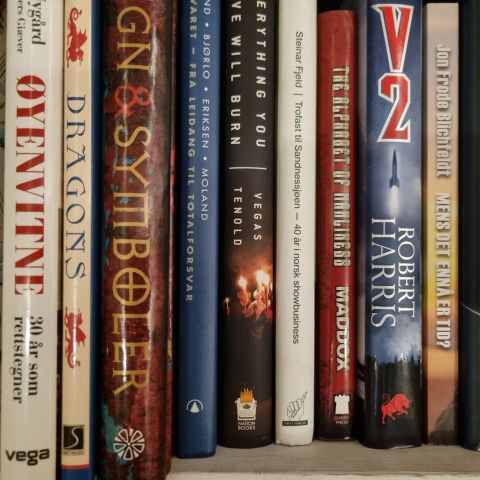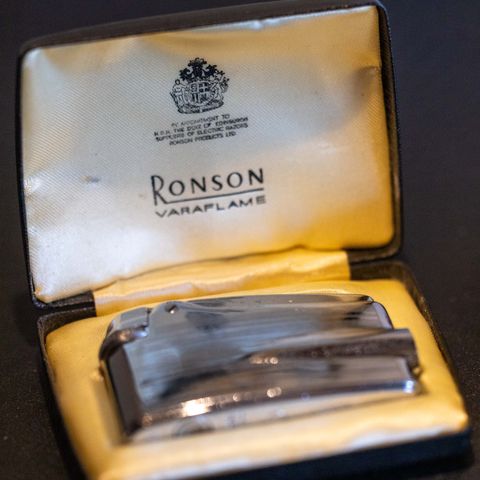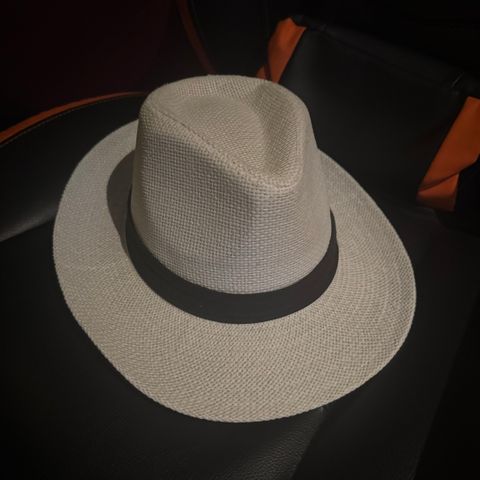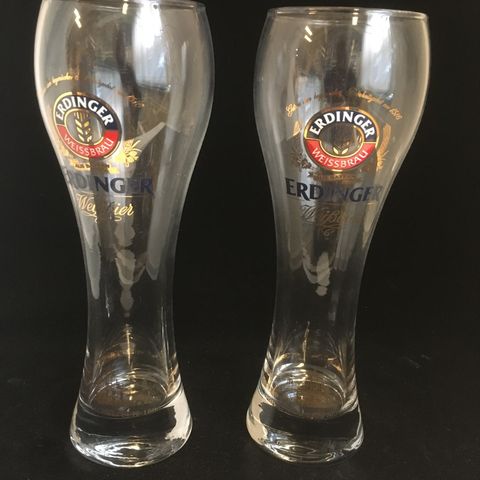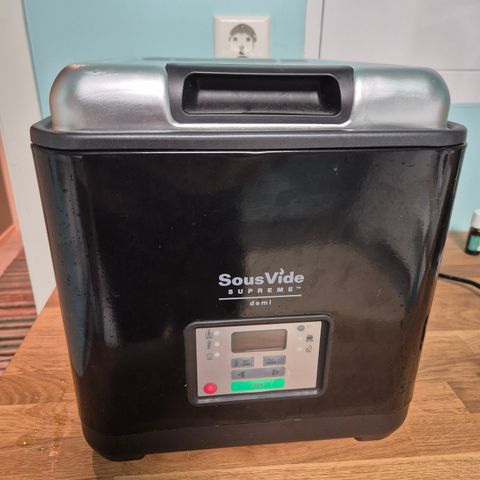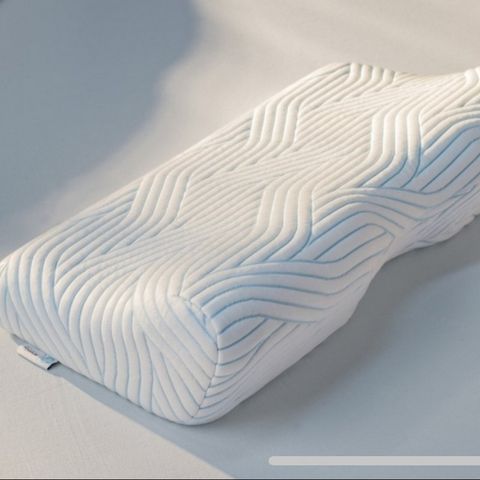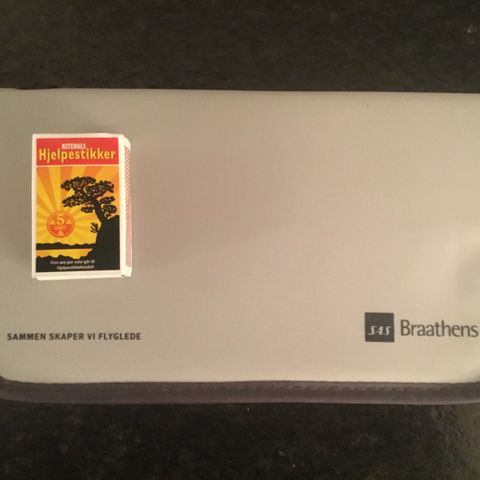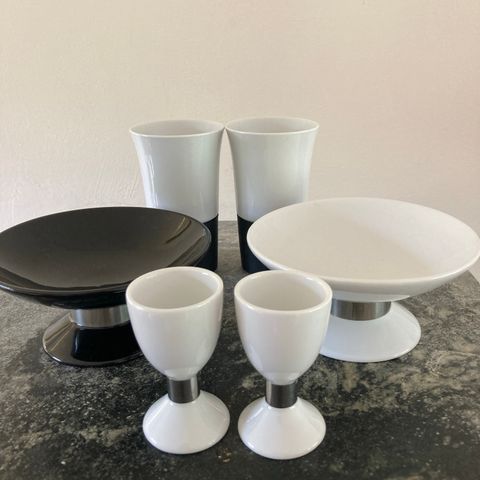Bildegalleri
Flere Segl Til De 7 Erkeenglene Amuletter.
Beskrivelse av varen
Tilstand: Helt ny - Uåpnet/med lapp
Hovedmateriale/stein: Gull
Annet materiale /stein: Sølv
Flere Segl av de 7 Erkeengelene Amuletter Sigillum DEI. Erkeenglene Enochian Talisman Rundt Segl. Den passer som en fin julegave til noen som er interessert i kristendom.
Sigillum DEI er en kristen segl symbol for gud.
The Sigillum Dei (seal of God, "Seal of Truth" or signum dei viv, symbol of the Living God, called by John Dee the Sigillum Dei Aemeth) is a magical diagram, composed of two circles, a pentagram, two heptagons, and one heptagram, and is labeled with the names of God and its angels. It is an angelic magic seal with the magical function that, according to one of the oldest sources (Liber Juratus), allowed a destined intended magician to have the power to possess the Spirit of God and when activated can become the Living God; or The Lord God itself; amongst humanity and all creation itself, communicate with spirits as well as angels and archangels, control all elements, control every creature's holy spirit on the planet including the Spirit of God itself; all except for the Archangels, and to control light itself. The intended user also possesses the true benefic vision of God.
Sloane MS 3188, (1582)
Middle Ages
edit
Liber Juratus
edit
Probably the oldest known description and image of the Sigillum Dei is the 14th-century Liber Juratus (also Liber Sacratus, Liber sacer sive Juratus, or Sworn Booke),[1] attributed to Honorius, son of Euclid.[2] This may have been produced in the late 13th century, but likely not before the time of Pope John XXII. (1316–1334).[3]
The description of the seal in the Liber Juratus begins with the dimensions of the circle surrounding the outside in relation to common symbol figures of the Christian tradition.
make first a circle whose diameter is three fingers, because of the three cross-nails of the Lord, or five fingers because of the five wounds of Christ, or seven for the seven sacraments, or nine for the nine orders of angels, but usually five fingers will suffice. Then make a second within this circle, let it be a distance from the first two grains because of the two Tablets of the Law of Moses, or three grains because of the persons of the Trinity.[4]
The so created circular band will be at an apex of a small cross and from this starting point proceed from left to right 72 Latin letters, which vary in tradition (MS Sloane 3853: h, t, o, e, x, o, r, a, b, a, s, l, a, y, q, c, i, y, s, t, a, l, g, a, a, o, n, o, s, v, l, a, r, y, c, e, k, s, p, f, y, o, m, e, n, e, a, u, a, r, e, l, a, t, e, d, a, t, o, n, o, n, a, o, y, l, e, p, o, t, m, a), the sum forming the Shemhamphorasch, in Jewish tradition the ineffable name of God ("magnum nomen Domini Semenphoras licterarum 72"), connected with the 36 decans of astrology.[5]
Next to the circular band is a pentagram, which focuses on a Greek Tau, this is surrounded by the five letters of the name of God "El" and "Ely", and five other pairs of letters (lx, al, a, c, to).
Inside the pentagon, in turn, is a heptagon drawn in such a way that its top side touches the centre tip of the pentagram, and the pages of this heptagon should be labelled with the names of seven angels and archangels Zadkiel, Samael, Zfadkiel, Raphael, Anael, Michael, Gabriel).
From this first heptagon is a second and a third drawing, whose description is hard to understand and has been interpreted differently in the manuscript illustrations, but has usually seven key points with crosses and labelled with two rows of Gods: a first series of seven names of God, each in three syllables or components disassembled and relating spatially with those on the initial and final syllables of the last names of angels and vertices of the figure, namely la-ya- ly (to Zfadkiel), na-ra-th (to Zadkiel), ly-bar-re (to Raphael), ly-ba-res (to Michael), (e) t-ly-alg (to Samael), ve -h-am (to Anael), and y-al-gal (to Gabriel); also in sub-segments seven more: Vos, Duynas, Gyram, Gram, Aysaram, Alpha and Omega, a third series El, On, El, On, El, On, Omega; as additions to the registered crosses the four letters a, g, a, l; and finally another group of five names of God Ely, Eloy, Christ, and Sother Adonay.
The colour of the seal of the Liber Juratus indicates that the pentagram is usually red, purple with yellow faces, the first heptagon blue, second yellow, the third yellow and the black circles, and also the area between the circles and all other surfaces were to turn green. In magical operations, this would be handled differently – instead drawn on virgin parchment with the blood of the mole, pigeon, hoopoe, bat or other animals, such as cattle, horses or deer.
Clavicula Salomonis
edit
Different versions of the Sigillum Dei are known from the tradition of the Clavicula Salomonis, specifically from an Italian manuscript in the collection of Heimann Joseph Michael in the Bodleian Library (MS. Michael 276); and John Aubrey in 1674 made a copy, also in the Bodleian Library (MS. Aubrey 24).
Early modern
edit
One of the oldest surviving manuscripts of the Liber Juratus, dating from the end of the 14th or the beginning of the 15th century, is Sloane MS 313 from the collection of Hans Sloane in the British Library. It was partly owned by the mathematician and magical experimenter John Dee, in whose Mysteriorum Libri Quinti, or Five books of mystical exercises (1581–1583), the Sigillum Dei played a central role and gained the suffix Sigillum Dei: Emeth or Aemeth ("Truth").[6]
For John Dee, who received the authoritative description of the seal in 1582 via his medium and employee Edward Kelley, this scholarly and antiquarian interest was ultimately subordinate to the purpose of practical application. This can be contrasted with Athanasius Kircher, who devoted a detailed explanation to the Sigillum Dei in his Oedipus aegyptiacus,[7] who linked the rejection of magical practice with a scholarly effort to understand the Christian, Jewish, Arab-Muslim and pagan parts and separate them.
Sigillum Dei Aemeth
John Dee performing an experiment before Queen Elizabeth I. (Oil painting by Henry Gillard Glindoni).
Public domain
By Catherine Beyer
Updated on April 12, 2019
The Sigillum Dei Aemeth, or Seal of the Truth of God, is most widely known through the writings and artifacts of John Dee, a 16th century occultist and astrologer in the court of Elizabeth I. While the sigil does appear in older texts of which Dee was probably familiar, he was not happy with them and ultimately claimed guidance from angels in constructing his version.
Dee's Purpose
Dee inscribed the sigil on circular wax tablets. He would commune via a medium and a "shew-stone" with the angels, and the tablets were used in preparing the ritual space for such communication. One tablet was placed upon a table, and the shew-stone upon the tablet. Four other tablets were placed beneath the legs of the table.
In Popular Culture
Versions of the Sigillum Dei Aemeth have been used several times in the show Supernatural as "demon traps." Once a demon stepped within the confines of the sigil, they became unable to leave.
General Construction
Dee's system of angelic magic, known as Enochian, is heavily rooted in the number seven, a number which is also strongly connected with the seven traditional planets of astrology. As such, the Sigillum Dei Aemeth is primarily constructed of heptagrams (seven-pointed stars.
A. The Outer Ring
The Outer ring contains the names of seven angels, each associated with a planet. To find a name, start with a capitalized letter on the ring. If there is a number over it, count that many letters clockwise. If there is a number under it, count that many letters counterclockwise. Continuing the procedure will spell out the names:
* Thaaoth (Mars)
* Galaas (Saturn)
* Gethog (Jupiter)
* Horlwn (Sun)
* Innon (Venus)
* Aaoth (Mercury)
* Galethog (Luna)
These are the Angels of Brightness, who comprehend the seven "inward powers of God, known to none but himself."
B. "Galethog"
Inside the outer ring are seven symbols based on the letters forming "Galethog," with "th" being represented by a single sigil. The name can be read counter-clockwise. These seven sigils are the "Seats of the One and everlasting GOD. His 7 secret Angels proceeding from every letter and cross so formed: referring in substance to the FATHER: in form, to the SON: and inwardly to the HOLY GHOST."
C. The Outer Heptagon
The names of the "Seven Angels who stand before the presence of God," each also associated with a planet, were written vertically into a 7-by-7 grid. By reading the grid horizontally, you get the seven names listed in the outer heptagon. The seven original names were:
Ads by
Send feedbackWhy this ad?
Ads by
Send feedbackWhy this ad?
Not interested in this ad
Ad was inappropriate
Seen this ad multiple times
Ad covered content
Thanks. Feedback improves Google ads
Thanks. Feedback improves Google ads
Ad closed by
Ad closed by
* Zaphkiel (Saturn)
* Zadkiel (Jupiter)
* Cumael (Mars)
* Raphael (Sun)
* Haniel (Venus)
* Michael (Mercury)
* Gabriel (Moon)
The resulting new names are written clockwise.
The Central Structures (D. E. F. G. and H.)
The next five levels are all based off of another 7-by-7 grid of letters. Each is read in a different direction. The letters are names of more planetary spirits, originally written in a zigzag pattern, starting in the upper left corner (the "el" of each name was removed in the creation of the grid):
* Sabathiel (Saturn)
* Zedekieiel (Jupiter)
* Madimiel (Mars)
* Semeliel (Sun)
* Nogahel (Venus)
* Corabiel (Mercury)
* Levanael (Moon)
The names between the outer heptagon and heptagram are constructed by reading the grid horizontally. They are the "Names of God, not known to the Angels; neither can be spoken nor read of man."
The names within the points of the heptagram are the Daughters of Light. The names within lines of the heptagram are the Sons of Light. The names within the two central heptagons are the Daughters of the Daughters and the Sons of the Sons.
I. The Pentagram
The planetary spirits are repeated around the pentagram. The letters spelling out Sabathiel (with the final "el" again removed) are scattered around the outside. The next five spirits are spelled out closer to the center, with the first letter of each name within a point of the pentagram. Levanael is at the very center, surrounding a cross, a common symbol of earth.
* Vimeo Pnterest Tumblr Twitter TripAdvisor
2030 – SEAL OF GOD
Physical description: Copper disc engraved with the Seal of God (Sigillum Dei Aemeth) - a complex talisman used for inducing visions and invoking spirits.Museum classification: Ritual MagicSize: 100 mm diam.Information:
From Cecil Williamson's personal collection. This talisman, the Seal of God, was first described in the 13th century book of magic The Sworn Book, written by Honorius of Thebes and the Angel Hocroel. The Elizabethan magician John Dee and his scrying assistant Edward Kelley drew up a modified version (which they called the Sigillum Dei Aemeth).
Aleister Crowley published details of it in The Equinox. This is the version engraved on this copper disc for Cecil Williamson.
See also objects 3933, 3877 and 3869.
Cecil Williamson said that Dee was, “appointed by Queen Elizabeth I to be her astrologer and occult adviser, generally nicknamed by the public as "Queen Elizabeth's Merlin". He was one of the most learned men of his age but he said that he wanted more, “All my life time I had spent in learning…I had…sought to come by the best knowledge that man might attain unto in the world; And I found…that neither any man living nor any Book…was able to teach me those truths I desired and longed for…” As a result of his prayers, Dee said that God’s holy angels began to inform him.
The spirits were quite explicit about how to contact them. The crystal was to be put on top of “The Seal of God”. This was to be rested on the Holy Table and seals of God made from wax were to put under each of the four table legs. The spirits showed them the design of each of the seal and the table.
“It is so terrible, I tremble to gather it.” John Dee.
Sometimes the spirits would come out of the crystal, this picture shows two of the spirits who appeared most regularly: a young elfine like girl called Madimi and a spirit that dressed like a jester or fool who opened up his chest to show his heart where the word “El” was inscribed. This spirit sometimes spoke in a language that Dee didn’t understand, it then told Dee that within 28 days he would receive the legendary Book of Enoch or the Liber Logaeth “which in your language signifieth Speech from GOD” the Spirit explained.
Kelley sat in front of the crystal. An angel would appear with a wand. The angel would then point to the board and Kelley would explain what he saw. Dee wrote this down on a pre-prepared table or grid. Over a series of encounters, a whole language was communicated to Dee and Kelley. This was said to be the language of God and the angels, the language which Adam originally spoke in and which he used to name all the plants and animals in the Garden of Eden. Knowledge of this language, it was said, could give one power and understanding like a God.
The language Dee and Kelley wrote down has become known as Enochian (in the Bible, Enoch is Adam’s great great great great great grandson, he is said to have walked with God, to have lived for 365 years, he may have entered Heaven while still alive and is believed to have been the last person to speak the original divine language before Dee and Kelley wrote it down in the 1580s).
For several years in the 1580s, Dee worked with Edward Kelley. Kelley became his scryer. He would gaze into a crystal which was described by Dee as, “as big as an egg, most bright, clere and glorious.” Kelley then reported what he saw and Dee wrote it down.
This cross (below) with AGLA (a notakarion meaning "You, O Lord, are mighty forever") was meant to be put on the back of the Seal.
This was to be rested on the Holy Table and seals of God made from wax were to put under each of the four table legs. The spirits showed them the design of each of the seal and the table. A modern reconstruction of the Holy Table can be seen below.
The design of the Seal of God
Resource: ObjectMaterials: CopperCopyright ownership: MWM
From Cecil Williamson's personal collection. This talisman, the Seal of God, was first described in the 13th century book of magic The Sworn Book, written by Honorius of Thebes and the Angel Hocroel. The Elizabethan magician John Dee and his scrying assistant Edward Kelley drew up a modified version (which they called the Sigillum Dei Aemeth).
Aleister Crowley published details of it in The Equinox. This is the version engraved on this copper disc for Cecil Williamson.
See also objects 3933, 3877 and 3869.
Cecil Williamson said that Dee was, “appointed by Queen Elizabeth I to be her astrologer and occult adviser, generally nicknamed by the public as "Queen Elizabeth's Merlin". He was one of the most learned men of his age but he said that he wanted more, “All my life time I had spent in learning…I had…sought to come by the best knowledge that man might attain unto in the world; And I found…that neither any man living nor any Book…was able to teach me those truths I desired and longed for…” As a result of his prayers, Dee said that God’s holy angels began to inform him.
The spirits were quite explicit about how to contact them. The crystal was to be put on top of “The Seal of God”. This was to be rested on the Holy Table and seals of God made from wax were to put under each of the four table legs. The spirits showed them the design of each of the seal and the table.
“It is so terrible, I tremble to gather it.” John Dee.
Sometimes the spirits would come out of the crystal, this picture shows two of the spirits who appeared most regularly: a young elfine like girl called Madimi and a spirit that dressed like a jester or fool who opened up his chest to show his heart where the word “El” was inscribed. This spirit sometimes spoke in a language that Dee didn’t understand, it then told Dee that within 28 days he would receive the legendary Book of Enoch or the Liber Logaeth “which in your language signifieth Speech from GOD” the Spirit explained.
Kelley sat in front of the crystal. An angel would appear with a wand. The angel would then point to the board and Kelley would explain what he saw. Dee wrote this down on a pre-prepared table or grid. Over a series of encounters, a whole language was communicated to Dee and Kelley. This was said to be the language of God and the angels, the language which Adam originally spoke in and which he used to name all the plants and animals in the Garden of Eden. Knowledge of this language, it was said, could give one power and understanding like a God.
The language Dee and Kelley wrote down has become known as Enochian (in the Bible, Enoch is Adam’s great great great great great grandson, he is said to have walked with God, to have lived for 365 years, he may have entered Heaven while still alive and is believed to have been the last person to speak the original divine language before Dee and Kelley wrote it down in the 1580s).
For several years in the 1580s, Dee worked with Edward Kelley. Kelley became his scryer. He would gaze into a crystal which was described by Dee as, “as big as an egg, most bright, clere and glorious.” Kelley then reported what he saw and Dee wrote it down.
This cross (below) with AGLA (a notakarion meaning "You, O Lord, are mighty forever") was meant to be put on the back of the Seal.
This was to be rested on the Holy Table and seals of God made from wax were to put under each of the four table legs. The spirits showed them the design of each of the seal and the table. A modern reconstruction of the Holy Table can be seen below.
Sigillum DEI er en kristen segl symbol for gud.
The Sigillum Dei (seal of God, "Seal of Truth" or signum dei viv, symbol of the Living God, called by John Dee the Sigillum Dei Aemeth) is a magical diagram, composed of two circles, a pentagram, two heptagons, and one heptagram, and is labeled with the names of God and its angels. It is an angelic magic seal with the magical function that, according to one of the oldest sources (Liber Juratus), allowed a destined intended magician to have the power to possess the Spirit of God and when activated can become the Living God; or The Lord God itself; amongst humanity and all creation itself, communicate with spirits as well as angels and archangels, control all elements, control every creature's holy spirit on the planet including the Spirit of God itself; all except for the Archangels, and to control light itself. The intended user also possesses the true benefic vision of God.
Sloane MS 3188, (1582)
Middle Ages
edit
Liber Juratus
edit
Probably the oldest known description and image of the Sigillum Dei is the 14th-century Liber Juratus (also Liber Sacratus, Liber sacer sive Juratus, or Sworn Booke),[1] attributed to Honorius, son of Euclid.[2] This may have been produced in the late 13th century, but likely not before the time of Pope John XXII. (1316–1334).[3]
The description of the seal in the Liber Juratus begins with the dimensions of the circle surrounding the outside in relation to common symbol figures of the Christian tradition.
make first a circle whose diameter is three fingers, because of the three cross-nails of the Lord, or five fingers because of the five wounds of Christ, or seven for the seven sacraments, or nine for the nine orders of angels, but usually five fingers will suffice. Then make a second within this circle, let it be a distance from the first two grains because of the two Tablets of the Law of Moses, or three grains because of the persons of the Trinity.[4]
The so created circular band will be at an apex of a small cross and from this starting point proceed from left to right 72 Latin letters, which vary in tradition (MS Sloane 3853: h, t, o, e, x, o, r, a, b, a, s, l, a, y, q, c, i, y, s, t, a, l, g, a, a, o, n, o, s, v, l, a, r, y, c, e, k, s, p, f, y, o, m, e, n, e, a, u, a, r, e, l, a, t, e, d, a, t, o, n, o, n, a, o, y, l, e, p, o, t, m, a), the sum forming the Shemhamphorasch, in Jewish tradition the ineffable name of God ("magnum nomen Domini Semenphoras licterarum 72"), connected with the 36 decans of astrology.[5]
Next to the circular band is a pentagram, which focuses on a Greek Tau, this is surrounded by the five letters of the name of God "El" and "Ely", and five other pairs of letters (lx, al, a, c, to).
Inside the pentagon, in turn, is a heptagon drawn in such a way that its top side touches the centre tip of the pentagram, and the pages of this heptagon should be labelled with the names of seven angels and archangels Zadkiel, Samael, Zfadkiel, Raphael, Anael, Michael, Gabriel).
From this first heptagon is a second and a third drawing, whose description is hard to understand and has been interpreted differently in the manuscript illustrations, but has usually seven key points with crosses and labelled with two rows of Gods: a first series of seven names of God, each in three syllables or components disassembled and relating spatially with those on the initial and final syllables of the last names of angels and vertices of the figure, namely la-ya- ly (to Zfadkiel), na-ra-th (to Zadkiel), ly-bar-re (to Raphael), ly-ba-res (to Michael), (e) t-ly-alg (to Samael), ve -h-am (to Anael), and y-al-gal (to Gabriel); also in sub-segments seven more: Vos, Duynas, Gyram, Gram, Aysaram, Alpha and Omega, a third series El, On, El, On, El, On, Omega; as additions to the registered crosses the four letters a, g, a, l; and finally another group of five names of God Ely, Eloy, Christ, and Sother Adonay.
The colour of the seal of the Liber Juratus indicates that the pentagram is usually red, purple with yellow faces, the first heptagon blue, second yellow, the third yellow and the black circles, and also the area between the circles and all other surfaces were to turn green. In magical operations, this would be handled differently – instead drawn on virgin parchment with the blood of the mole, pigeon, hoopoe, bat or other animals, such as cattle, horses or deer.
Clavicula Salomonis
edit
Different versions of the Sigillum Dei are known from the tradition of the Clavicula Salomonis, specifically from an Italian manuscript in the collection of Heimann Joseph Michael in the Bodleian Library (MS. Michael 276); and John Aubrey in 1674 made a copy, also in the Bodleian Library (MS. Aubrey 24).
Early modern
edit
One of the oldest surviving manuscripts of the Liber Juratus, dating from the end of the 14th or the beginning of the 15th century, is Sloane MS 313 from the collection of Hans Sloane in the British Library. It was partly owned by the mathematician and magical experimenter John Dee, in whose Mysteriorum Libri Quinti, or Five books of mystical exercises (1581–1583), the Sigillum Dei played a central role and gained the suffix Sigillum Dei: Emeth or Aemeth ("Truth").[6]
For John Dee, who received the authoritative description of the seal in 1582 via his medium and employee Edward Kelley, this scholarly and antiquarian interest was ultimately subordinate to the purpose of practical application. This can be contrasted with Athanasius Kircher, who devoted a detailed explanation to the Sigillum Dei in his Oedipus aegyptiacus,[7] who linked the rejection of magical practice with a scholarly effort to understand the Christian, Jewish, Arab-Muslim and pagan parts and separate them.
Sigillum Dei Aemeth
John Dee performing an experiment before Queen Elizabeth I. (Oil painting by Henry Gillard Glindoni).
Public domain
By Catherine Beyer
Updated on April 12, 2019
The Sigillum Dei Aemeth, or Seal of the Truth of God, is most widely known through the writings and artifacts of John Dee, a 16th century occultist and astrologer in the court of Elizabeth I. While the sigil does appear in older texts of which Dee was probably familiar, he was not happy with them and ultimately claimed guidance from angels in constructing his version.
Dee's Purpose
Dee inscribed the sigil on circular wax tablets. He would commune via a medium and a "shew-stone" with the angels, and the tablets were used in preparing the ritual space for such communication. One tablet was placed upon a table, and the shew-stone upon the tablet. Four other tablets were placed beneath the legs of the table.
In Popular Culture
Versions of the Sigillum Dei Aemeth have been used several times in the show Supernatural as "demon traps." Once a demon stepped within the confines of the sigil, they became unable to leave.
General Construction
Dee's system of angelic magic, known as Enochian, is heavily rooted in the number seven, a number which is also strongly connected with the seven traditional planets of astrology. As such, the Sigillum Dei Aemeth is primarily constructed of heptagrams (seven-pointed stars.
A. The Outer Ring
The Outer ring contains the names of seven angels, each associated with a planet. To find a name, start with a capitalized letter on the ring. If there is a number over it, count that many letters clockwise. If there is a number under it, count that many letters counterclockwise. Continuing the procedure will spell out the names:
* Thaaoth (Mars)
* Galaas (Saturn)
* Gethog (Jupiter)
* Horlwn (Sun)
* Innon (Venus)
* Aaoth (Mercury)
* Galethog (Luna)
These are the Angels of Brightness, who comprehend the seven "inward powers of God, known to none but himself."
B. "Galethog"
Inside the outer ring are seven symbols based on the letters forming "Galethog," with "th" being represented by a single sigil. The name can be read counter-clockwise. These seven sigils are the "Seats of the One and everlasting GOD. His 7 secret Angels proceeding from every letter and cross so formed: referring in substance to the FATHER: in form, to the SON: and inwardly to the HOLY GHOST."
C. The Outer Heptagon
The names of the "Seven Angels who stand before the presence of God," each also associated with a planet, were written vertically into a 7-by-7 grid. By reading the grid horizontally, you get the seven names listed in the outer heptagon. The seven original names were:
Ads by
Send feedbackWhy this ad?
Ads by
Send feedbackWhy this ad?
Not interested in this ad
Ad was inappropriate
Seen this ad multiple times
Ad covered content
Thanks. Feedback improves Google ads
Thanks. Feedback improves Google ads
Ad closed by
Ad closed by
* Zaphkiel (Saturn)
* Zadkiel (Jupiter)
* Cumael (Mars)
* Raphael (Sun)
* Haniel (Venus)
* Michael (Mercury)
* Gabriel (Moon)
The resulting new names are written clockwise.
The Central Structures (D. E. F. G. and H.)
The next five levels are all based off of another 7-by-7 grid of letters. Each is read in a different direction. The letters are names of more planetary spirits, originally written in a zigzag pattern, starting in the upper left corner (the "el" of each name was removed in the creation of the grid):
* Sabathiel (Saturn)
* Zedekieiel (Jupiter)
* Madimiel (Mars)
* Semeliel (Sun)
* Nogahel (Venus)
* Corabiel (Mercury)
* Levanael (Moon)
The names between the outer heptagon and heptagram are constructed by reading the grid horizontally. They are the "Names of God, not known to the Angels; neither can be spoken nor read of man."
The names within the points of the heptagram are the Daughters of Light. The names within lines of the heptagram are the Sons of Light. The names within the two central heptagons are the Daughters of the Daughters and the Sons of the Sons.
I. The Pentagram
The planetary spirits are repeated around the pentagram. The letters spelling out Sabathiel (with the final "el" again removed) are scattered around the outside. The next five spirits are spelled out closer to the center, with the first letter of each name within a point of the pentagram. Levanael is at the very center, surrounding a cross, a common symbol of earth.
* Vimeo Pnterest Tumblr Twitter TripAdvisor
2030 – SEAL OF GOD
Physical description: Copper disc engraved with the Seal of God (Sigillum Dei Aemeth) - a complex talisman used for inducing visions and invoking spirits.Museum classification: Ritual MagicSize: 100 mm diam.Information:
From Cecil Williamson's personal collection. This talisman, the Seal of God, was first described in the 13th century book of magic The Sworn Book, written by Honorius of Thebes and the Angel Hocroel. The Elizabethan magician John Dee and his scrying assistant Edward Kelley drew up a modified version (which they called the Sigillum Dei Aemeth).
Aleister Crowley published details of it in The Equinox. This is the version engraved on this copper disc for Cecil Williamson.
See also objects 3933, 3877 and 3869.
Cecil Williamson said that Dee was, “appointed by Queen Elizabeth I to be her astrologer and occult adviser, generally nicknamed by the public as "Queen Elizabeth's Merlin". He was one of the most learned men of his age but he said that he wanted more, “All my life time I had spent in learning…I had…sought to come by the best knowledge that man might attain unto in the world; And I found…that neither any man living nor any Book…was able to teach me those truths I desired and longed for…” As a result of his prayers, Dee said that God’s holy angels began to inform him.
The spirits were quite explicit about how to contact them. The crystal was to be put on top of “The Seal of God”. This was to be rested on the Holy Table and seals of God made from wax were to put under each of the four table legs. The spirits showed them the design of each of the seal and the table.
“It is so terrible, I tremble to gather it.” John Dee.
Sometimes the spirits would come out of the crystal, this picture shows two of the spirits who appeared most regularly: a young elfine like girl called Madimi and a spirit that dressed like a jester or fool who opened up his chest to show his heart where the word “El” was inscribed. This spirit sometimes spoke in a language that Dee didn’t understand, it then told Dee that within 28 days he would receive the legendary Book of Enoch or the Liber Logaeth “which in your language signifieth Speech from GOD” the Spirit explained.
Kelley sat in front of the crystal. An angel would appear with a wand. The angel would then point to the board and Kelley would explain what he saw. Dee wrote this down on a pre-prepared table or grid. Over a series of encounters, a whole language was communicated to Dee and Kelley. This was said to be the language of God and the angels, the language which Adam originally spoke in and which he used to name all the plants and animals in the Garden of Eden. Knowledge of this language, it was said, could give one power and understanding like a God.
The language Dee and Kelley wrote down has become known as Enochian (in the Bible, Enoch is Adam’s great great great great great grandson, he is said to have walked with God, to have lived for 365 years, he may have entered Heaven while still alive and is believed to have been the last person to speak the original divine language before Dee and Kelley wrote it down in the 1580s).
For several years in the 1580s, Dee worked with Edward Kelley. Kelley became his scryer. He would gaze into a crystal which was described by Dee as, “as big as an egg, most bright, clere and glorious.” Kelley then reported what he saw and Dee wrote it down.
This cross (below) with AGLA (a notakarion meaning "You, O Lord, are mighty forever") was meant to be put on the back of the Seal.
This was to be rested on the Holy Table and seals of God made from wax were to put under each of the four table legs. The spirits showed them the design of each of the seal and the table. A modern reconstruction of the Holy Table can be seen below.
The design of the Seal of God
Resource: ObjectMaterials: CopperCopyright ownership: MWM
From Cecil Williamson's personal collection. This talisman, the Seal of God, was first described in the 13th century book of magic The Sworn Book, written by Honorius of Thebes and the Angel Hocroel. The Elizabethan magician John Dee and his scrying assistant Edward Kelley drew up a modified version (which they called the Sigillum Dei Aemeth).
Aleister Crowley published details of it in The Equinox. This is the version engraved on this copper disc for Cecil Williamson.
Du må være logget inn for å se brukerprofiler og sende meldinger.
Logg innAnnonsens metadata
Sist endret: 23.11.2024 kl. 13:30 ・ FINN-kode: 381852106
Mer som dette
39 kr
